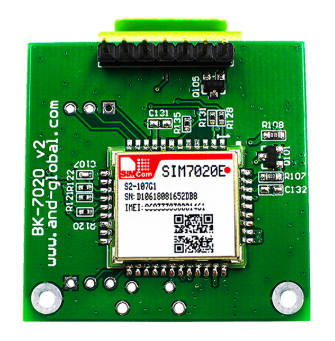Sim7020
| Project Sim7020 | |
|---|---|

| |
| SIM7020 NB-IOT modem | |
| Status | In progress |
| Contact | bertrik |
| Last Update | 2021-01-26 |
What
This page is about the SIM7020 NB-IOT module.
I want to experiment with this kind of network connectivity for either a bat activity monitor or air quality monitoring (particulate matter).
The t-mobile portal at http://portal.iot.t-mobile.nl is dead. Use the iotcreators portal.
Hardware
I wired it up like this:
| SIM7020 | USB serial | Remark |
|---|---|---|
| G | nc | looped to SIM7020-K |
| R | TXD | |
| T | RXD | |
| K | nc | looped to SIM7020-G |
| V | 3V3 | |
| G | GND | |
| S | DTR |
Software
Receiving data from the device
First of all, a comparison to how things work with TheThingsNetwork:
- TTN publishes incoming data using MQTT
- MQTT is a light-weight publish-subscribe framework that decouples producers of data from consumers of data. So for example you can easily have one producer (the node) and several consumers, for example a logger, a data handler, or even a 3rd party that does its own thing with the data.
- TTN runs its own MQTT server, so you don't have to. There's no need for setting up your own server, with a public facing ip address, a firewall, security policies, etc.
- MQTT distinguishes different types of message by different "topics", you can only access topics you are authorised to (your own). So for example, you can easily authorise someone to see device messages, but not allow device registration access.
In my opinion, a very good match to the nature of the messages in such a network.
NB-IOT uses a different approach:
- You configure an "endpoint" and t-mobile pushes data towards that
- The endpoint is your own server that has to be ready to ready to receive incoming data. You have to manage this server yourself w.r.t. security. If you want other parties to use the data, you'll also have to come up with your own solution to that.
So, not as smart as TTN does it, but still very powerful.
References
I followed roughly this guide:
- Ordered a SIM7020 and a starter kit, see https://www.hackster.io/voske65/arduino-nb-iot-with-sim7020-and-t-mobile-027f8f
- t-mobile IOT configuration page: https://portal.iotcreators.com/ ?